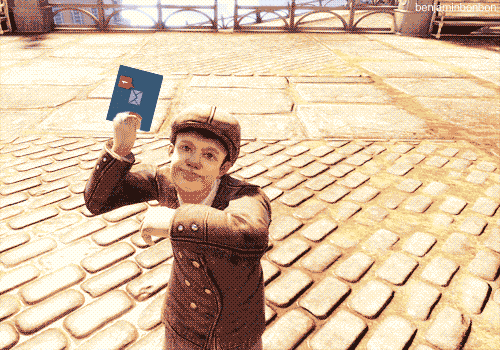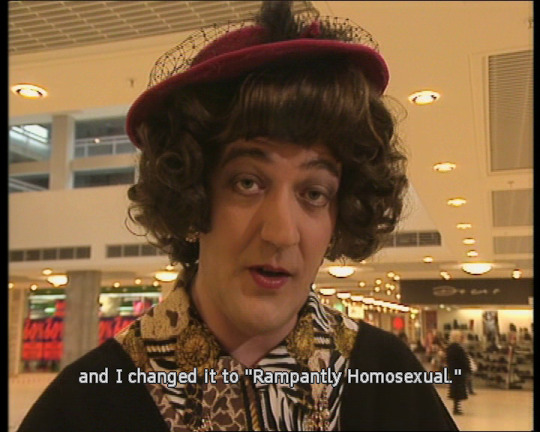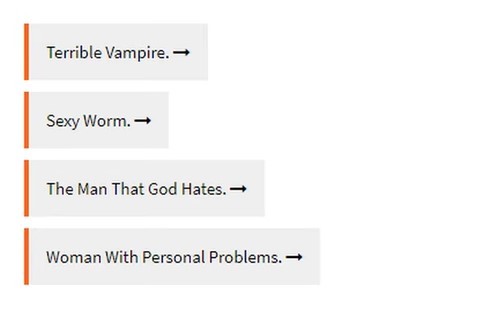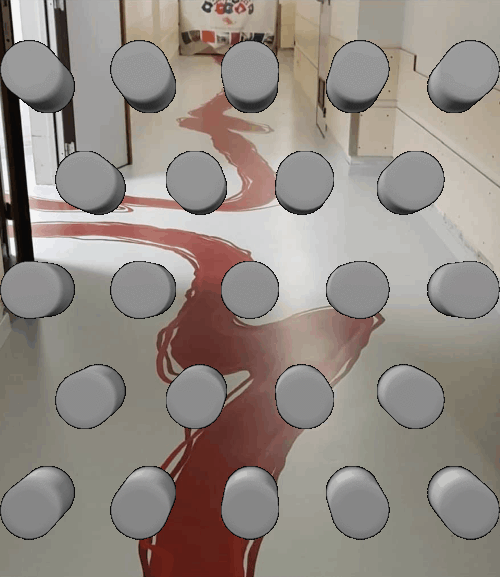Text
I HEAR THOSE SLEIGH BELLS JINGLING
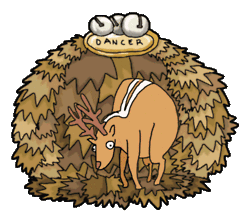
RING TING TINGLING TOOOOOOOOOOOOO

COME ON IT’S LOVELY WEATHER
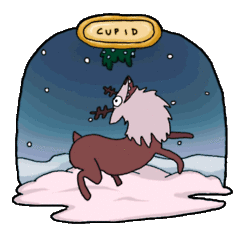
FOR A SLEIGH RIDE TOGETHER WITH YOUUUUUUUUUUUUUUUU
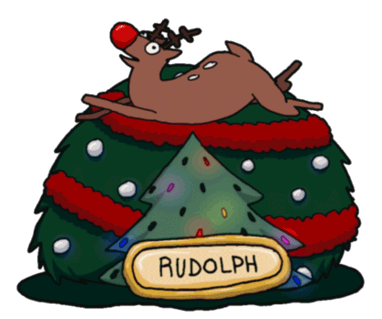
1M notes
·
View notes
Text
what if every Tumblr user suddenly looses their mouse?
641K notes
·
View notes
Text



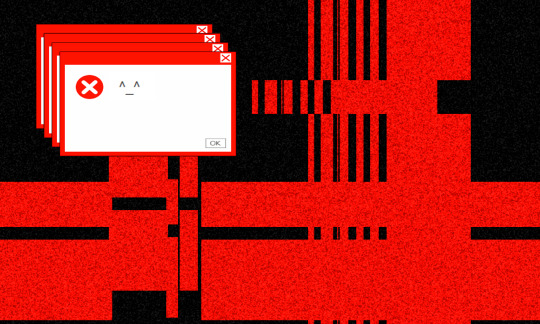
viruscoric // viruscoretic
a gender similar to errorcoretic, except it feels more evil and malicious in intent and wants to fuck things up just for the sole reason of being evil. shares the vibe that villain genders or villain aesthetics have, except it's specifically around tech, glitches, errors and hacking.
flag inspired by @sparklebunny's errorcoretic flag! :]
dni: super straight/gay/lesbian, terfs, truscum, mogaiphobic, proship and similar yucky people
dont clown on the post >:/
201 notes
·
View notes
Text
The evolution of the flag as a concept of identity in art, mid-20th century to present day
Flag - a piece of cloth or similar material, typically oblong or square, attachable by one edge to a pole or rope and used as the symbol or emblem of a country or institution.
-Oxford Languages, ‘flag’ definition.
This definition of a flag is how the concept has been presented within art throughout the majority of history. One of the most recognizable paintings with a traditional flag motif is Eugène Delacroix's "Liberty leading the people", which features prominent use of the French tricoleur. In mid-twentieth century western art, the most famous use of flags was by the American abstractionist Jasper Johns.
Using the American flag as an icon in much the same way that Andy Warhol had used Campbell's soup cans, Johns created several works in which the central image was the US flag, - the first and best known being “Flag”.
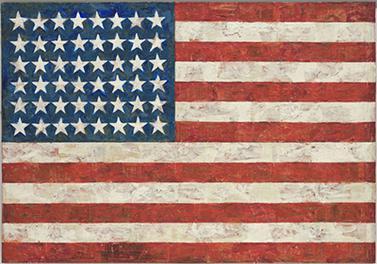
Produced using an encaustic technique, the painting is that of the eponymous US flag, with 48 stars and thirteen red and white stripes. Upon closer inspection, an additional layer of detail is revealed, as one is enabled to make out the complex collage of newspaper clippings and photos acting as a muted background to the flag, accentuating the depth of the piece by generating texture on the fabric mounted on plywood.
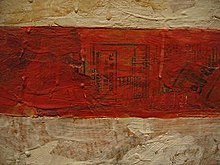
see above: Detail from J. Johns’ “Flag”.
First in the series, the oil and collage piece holds a personal meaning to the artist who, an honorably discharged veteran, chose the subject matter as something “the mind already knows”, - predetermined, recognizable, and thus permitting Johns to focus on surface and execution rather than the subject.
The familiar patriotic and nationalistic imagery of the star-spangled banner combined with the layers of detailed collaging open up the symbolic richness of what had previously been presented as a fixed symbol. In this way, the piece comments upon the multi-layered and malleable nature of a nation. Having been produced post the second World War, and the rest of the series during and after the Vietnam War, the paintings are politically charged and may be interpreted with either a positive patriotic light or with a sense of bitter sarcasm. The obscured newspaper clippings used for the collage, masked or hidden by the red, white, and blue oil paint seem to indicate the intention of the painting towards the latter, as the clippings may be seen as symbolic of the nation’s government’s failures towards its citizens, masked under obsessively prideful patriotism and nationalism. Being a queer man and a veteran in a mid-twentieth century US, Johns would’ve been especially aware of the shortcomings of his nation, as homosexuality had been illegal and oppressed in all states up until 1962, and his military experience would’ve presented plenty of evidence of cruelty and unfairness.
Despite the both figurative and literal stains upon the star-spangled banner of Jasper Johns’ “Flag”, it retains its symbolism as an emblem representative of one’s national identity, as indicated by the Oxford definition of the word. However, as societal and cultural norms evolved, there occurred a shift in the sense of what a flag is. With the rise of the LGBTQ+ rights movement, a need for the expansion of the definition arose, as individual groups within the general queer community created symbols that represented their specific identity, and there is no other way to define them than as flags. Due to the ever-changing nature of definitions, there is a need to define the term ‘flag’ for the purpose of this investigation. The Oxford definition confines it to a piece of cloth of a specific shape, but keeping in mind the rise of the digital age, the physical restrictions of the definition are to be rejected. For the intents and purposes of this investigation, the definition of ‘flag’ is as follows:
a symbol or emblem of a country, institution, or identity, typically oblong or square.
The inclusion of identity opens up the definition to a number of examples which then have to be judged as to whether or not they should be considered as flags on an individual level. One such sample is the NAMES Project AIDS Memorial Quilt. Although it may be recognized as an emblem or symbol of a group of people with a common cause, - ensuring those lost to AIDS are not neglected or forgotten, as well as that the tragedy does not repeat - it is not a single relatively simple and easily recognizable image, but rather a collection and collage of smaller-scale images, producing an irregular shape. It’s less of a representation of an identity and more of a message towards society that had neglected and forgotten AIDS victims, a memorial - as implied by the name. Although the new definition of ‘flag’ is fluid and open to multiple interpretations, it retains some extent of restriction, such as the matter of being easily recognizable as the symbol of a group of individuals united by specific qualities, with a relatively regular shape when considered on a physical level.
With the development of the definition, the applications of flags in art also evolved. Rather than a symbol of nationality and an expression of one’s patriotism, flags begin to be employed to convey a message of collaboration between nations and call to unity, such as “The United Nations Of Ant Farms” (also known as “The World Flag Ant Farm” or “Pacific”) by Yukinori Yanagi.

Created by pouring coloured sand into plexiglass labyrinths to create a collection of flags, and then allowing an ant colony to migrate across from rectangle to rectangle, deteriorating the delicate makeup of the symbols of nations, mixing their colours. The movement of ants across the sandy borders is a statement on national identity and the division of cultures across the world. Over time, the sands evolve and the divided system breaks down into an ambiguous blend of flags.

^ Mixing of sands between the US and Japanese flags
The artist himself identifies with the piece, as he explains that “my works are borders I have had to cross or barriers I have confronted trying to define myself as Japanese.” The piece carries a message of identity, culture, borders, and barriers, - and overcoming them.
While the passage of time unified the flags of Yanagi’s ant farms, in the wider world it brought about the digital age, and with it new forms of art, and new messages being conveyed by it. The rapid digitalization of all parts of culture, - entertainment evolving through television, the development of personal computers and the emergence of video games, and the early appearances of the Internet, - becomes increasingly more apparent in the art scene as well. The use of non-traditional, digital media becomes increasingly common.
Nam June Paik, a seminal pioneer of video art, integrated the latest advances in video technology at the time (1985), to create the “Video Flag”.

“Video Flag” is a ‘wall’ of screens projecting an assortment of alternating images, a rapidly shifting digital collage to simulate the visual of the United States flag, reminiscent of Jasper Johns’ similarly named and styled “Flag”. Both “Flags” consist of a collage-esque makeup to create a sense of depth, and to better convey its somewhat critical message. Paik emphasizes the pop cultural influences of America, the stars and stripes of the flag, and the television set, while making a metaphorical statement about the dominance of technology in the twentieth century. The television sets project a flickering series of predominantly red, white, and blue images meant to visually engage the viewer who is accustomed to the passivity associated with watching television. It is a self-aware piece commenting upon the addicting nature of digitalization while utilizing it to send its message.
Thomas Yeomans, a contemporary artist, also works with flags in the digital medium, and utilizes pop-culture references to generate a set of ideas, each respective to its specific flag, and commentates upon the political turmoil present during 2016-17. He rendered a series of CGI flags, collaging together different symbols and colour codes, - utilizing the structure and motifs of traditional nation flags, - lifted from unrelated contexts and united into “one cohesive emblem of unity”, as stated by the artist.

^ “Queer sigil” (~2017), digital print on lightbox, Thomas Yeomans, “Flags” series
Each piece within the series is a moment frozen in time, - 1/25th of a second, - within which the digitally rendered material is in a perfectly unique shape, one it would never be able to replicate if it had been a physical object. The visual of a wind-blown flag is reminiscent of historical paintings, such as Eugène Delacroix's "Liberty leading the people", however, the message being conveyed by Yeomans’ work is far from the patriotism of the French Liberty. “The queer sigil in this flag is constructed from an inverted triangle, an LGBTQ+ emblem reclaimed from a nazi badge of shame, a symbol used by a chaos magic collective called Thee Temple of Psychic Youth, and crosses as found in Pagan and Christian symbology,” explained the artist. As a gay cis man living in a queer space in 2017, Yeomans was inspired by how the queer community dismantled repressive heteronormative models in favour of new, more inclusive ones. This is apparent in the imagery used within the “Queer sigil”, as it meshes together religious symboligy, reclaimed queer imagery and symbols of “chaos magic”, just how the queer community mixes aspects of these factions and incorporate them in their day to day lives, creating a more inclusive society. The community engages in a sort of “world-building”, expressed Yeomans, as they build up their own surroundings to be inclusive and safe. The artist reflects this in the piece, as the viewer is unable to see the ground and is looking up to the flag, - there’s a sense of ambiguity, as the observer is not aware of where the flag is, and thus their imagination is enabled to engage in similar world-building, creating a time and a space for the queer sigil.
Around the same time as Yeomans was working on the ‘Queer sigil’, a rise in online subcultures engaging in similar “world-building” occurred. Speculative futures were represented by new ideologies inspired by science-fiction, ancient history, pop-culture and conspiracy theories.
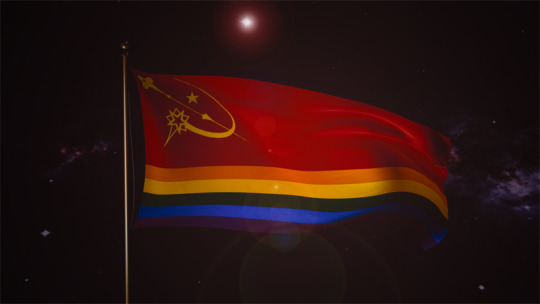
^ “Fully Automated Luxury Gay Space Communism” Thomas Yeomans, “Flags” series
Yeomans appropriated a meme (of sorts) based on a communism-based conspiracy theory as inspiration for the “Fully Automated Luxury Gay Space Communism” CGI flag render. “This flag imagines a queer utopia, based off-planet, sustained by luxury distributed through full automation”, the concept is explained by the artist. It is an artistic manifestation of queer humour, world-building and culture.
The arrival of the digital age and the appearance of queer “world-building” communities manifested a notable presence on online social media platforms such as Tumblr.com, where an individual was able to reach a significant number of people with similar interests and qualities. This resulted in Tumblr becoming a sort of echo chamber, with ideas and speculations being reflected and blown up throughout time. This development of the queer community saw an influx in younger members of the LGBTQ, yearning to belong to a group of fellow-minded people, while also retaining as much uniqueness and individuality as possible. Thus another subculture evolved from the general online queer culture: the MOGAI community.
MOGAI - aka IMOGA or MOGII; stands for “marginalized orientations and gender alignments, or identities and intersex”.
MOGAI is an alternative acronym to GSRM (gender, sexual and romantic minorities). Viewed by the larger community as a social justice-adjacent movement that claims to be within (and synonymous with) the LGBTQ+ community, and often identified with Xenogenders (any gender identity that is typically associated with concepts that are not entirely related to gender, “other-gender”) and Xeno-sexualities (sexual identities associated with the concept that are not entirely related to sexuality, adjacent to paraphilias). Although generally regarded to be a problematic subculture stemming from the queer online community due to their social justice warrior affiliation, individuals within the MOGAI community have developed a culture of flag creation. In order to emulate the larger, wider accepted subgroups within the queer community, individuals create unique and less than traditional flags to represent their specific identities. This practice became so common and so widespread that it began to be considered more an individual art form rather than a collection of representative symbols.

The flags above have been picked out from a large assortment in order to showcase the general level of variation in the designs. Each flag will be commented upon individually as well as their respectively represented types of flag designs present within the MOGAI community.
The Angelmeatic flag, carrying the idea of an identity associated with the connection between celestial and carnal concepts, of angels and meat and cannibalistic consumption, follows a very traditional layout, with a collection of horizontal stripes of different colours. The overall red colour palette is cooled by dark blue stripes. The general layout emulates the structure of a mouth, with a tongue-like pink encased by lighter shades of beige reminiscent of teeth enamel. The simulation of thematic colour schemes within flags is common practice within the MOGAI community, especially for flags that only consist of simple colour stripes, as this allows a more obvious connection between the flag’s visual appearance and the identity it represents.
The Alderkevos flag, representative of the xenogenders that relate to the wish to be perceived as part or entirely made out of void, or cosmos-esque space, follows a slightly a-traditional structure of flag design. The overall shape of the flag diverts from its traditional contour as it appears to be elongated in the horizontal field, with an aspect ratio similar to that of the flag of Qatar. The overall colour scheme consists of desaturated brown and beige shades, creating the mental association with the dark academia aesthetic movement that had been prominent on social media since around 2018, brought about by Donna Tartt’s “The Secret History”. In the center of the flag, an irregular black rhombus with a beige outline set to distinguish it from other dark colours; while traditionally the shape is associated with fertility and female anatomy, it had been repurposed within the flag as an aesthetically pleasing geometric pattern, representative of the void that those identifying with Alderkevos wish to embody, tearing across the flag in the same manner void should tear through the body. The general shape of the flag still follows traditional design, except for its incorporation of the central piece. This is a more common type of flag design, as the additional symbols within the flags overlapping the stripes allow for easier distinction and differentiation amongst the vast numbers of flags being produced within the MOGAI community.
Finally, the Realmpunk (a recoin of a previous term, Dimensionpunk) flag, is a relatively rare occurrence of a complete diversion from the traditional stripped layout of most MOGAI (and many real-life) flags. Although an alternative version is present, its flow of colours is incomparable to the complex circular structure of the “official” Realmpunk identity flag, which is unique even amongst the thousands of custom MOGAI flags. The flag’s distinctive design, - with the multiple rings (representative of the multiple realms or dimensions that the individual feels in contact with) elipsing a white sphere (representative of the individual themselves, and their identity connecting to the ability to traverse said realms), strives to appear as unique and specific as the identity of the individual that it portrays, - a near perfect manifestation of individuality, encased in a symbol otherwise connected to the unification of groups. This duality of a flag allows one to explore a complex relationship between ones individual identity and social alignment, and to do so through the particular art form that is flag design.
With the development of online culture within the last two decades, the art form of flags has evolved beyond a symbol of patriotism or, opposingly, criticism to ones nation or society. In its present day form, it allows for exploration of one’s specific individual identity, whilst also forming a community around it of fellow minded individuals, or, alternatively, provides an easily accessible aesthetic outlet for those that wish to assign artistic value to their identity but do not feel adequately able to do so through more complex and traditional art forms. Flags have evolved over time from motifs within paintings to an art form of their own, whilst still carrying the weight and duality of identity and unification under one symbol.
#academic essay#art essay#my essays#assignment#research#discussion#mogai gender#mogai pride#mogai community#mogai flag#labels#orientation#art#art stuff#education#essayist
7 notes
·
View notes
Text
is there anything better than an ancient greek hedgehog figurine? i think not
124K notes
·
View notes
Text
64K notes
·
View notes
Text
the tumblr holiday checklist aka the only thing that gets me through the year:
ides of march ✅
oscars ✅
april fool’s day ✅
neil banging out the tunes ✅
the perfect date (april 25th)
it’s gonna be may
met gala
star wars day
dashcon
dancing pumpkin day
mean girls day
the skeleton war
november 5th
please it’s christmas (it’s december 10th)
41K notes
·
View notes
Text
joe biden appoints weird bug to be in charge of the night time is one of my all time fav images ever
92K notes
·
View notes
Text
“gender envy” this “gender envy” that,,, sir that man is a senior citizen
125K notes
·
View notes
